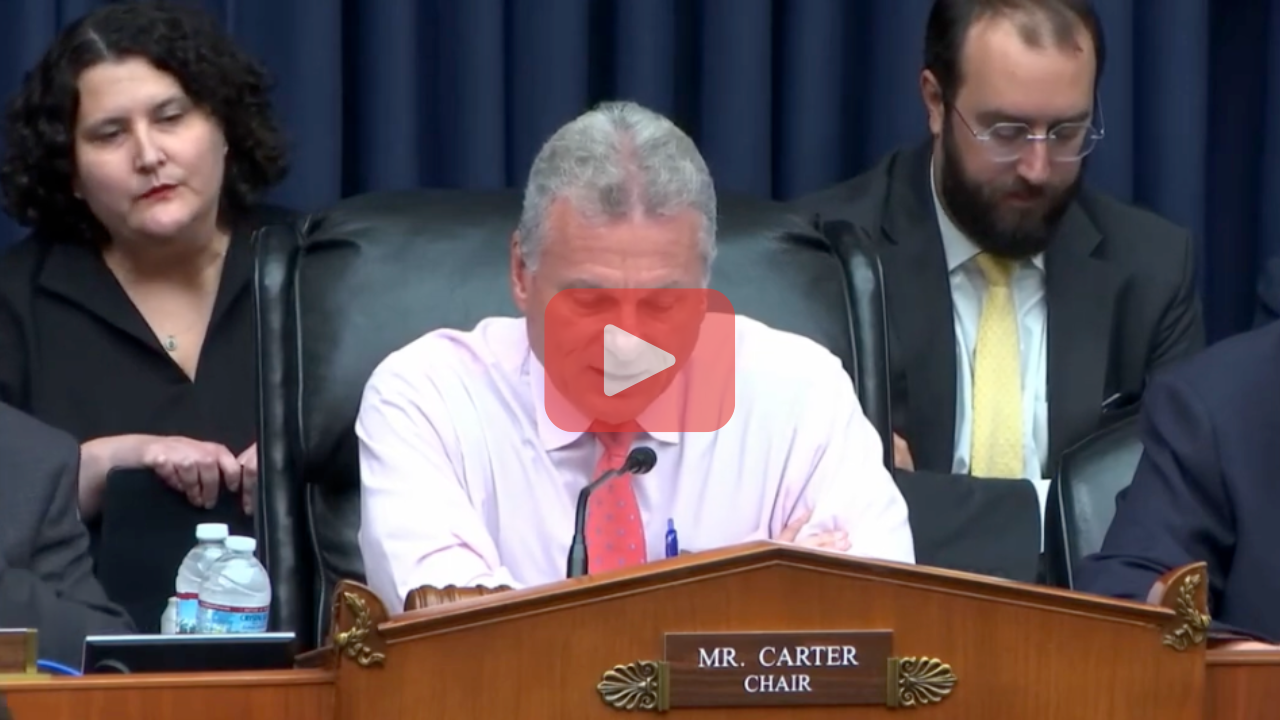Washington D.C. — House Energy and Commerce Subcommittee on Environment, Manufacturing, and Critical Materials Chair Earl L. "Buddy" Carter (R-GA) delivered the following opening remarks at today’s subcommittee hearing titled “The Fiscal Year 2025 Environmental Protection Agency Budget.”


RUSH-TO-GREEN AGENDA IS DESTROYING AMERICAN MANUFACTURING
“I recently assumed the gavel of this subcommittee and am privileged to be able to lead this panel’s important work to advance policies which provide for environmental protection while also growing our manufacturing and industrial base.
“My district in southeast Georgia features over 100 miles of pristine coastline, the Okefenokee Swamp, and thriving forestlands.
“These are resources we cherish and strive to protect for future generations.
“We are also one of the fastest growing economies in the country.
“Billions of dollars of investment are flowing to my district, fueled by Georgia’s pro-business policies, low electricity rates, and access to the Ports of Savannah and Brunswick.
“To the detriment of my district and the stated goals of this administration, the EPA’s regulatory agenda is poised to choke the prospects for increased prosperity.
“The recently finalized Particulate Matter—PM2.5—standard will gridlock permitting at new and expanded manufacturing facilities.
“By placing the standard so close to the natural background level, studies indicate that nearly 80 percent of manufacturing projects would fail to obtain a permit, including the $5.5 billion Hyundai electric vehicle (EV) battery plant in my district.
“Luckily, this investment received its permit before the standard was revised.
“China controls over 75 percent of the EV battery supply chain and actions like the PM2.5 standard threaten to tighten their chokehold on battery manufacturing.
“Meanwhile, the EPA, in its zealous rush-to-green agenda, has mandated that almost 70 percent of new passenger vehicles sold by 2032 be electric.
“I am not anti-EV. I believe there is a market for EVs, and we should be building up our entire supply chain, including in Georgia, to reduce reliance on China.
“However, I am anti-mandate. The EPA’s EV mandate reduces consumer choice, and its efforts to limit new critical mineral refining ties us to China and threatens grid reliability.”
EPA’S ONE-SIZE-FITS-ALL APPROACH DOESN’T WORK
“While the administration pushes grandiose electrification visions, the EPA seems to have forgotten that electricity does not come from the plug.
“The illegal Clean Power Plan 2.0 threatens to shutter 16 percent of our reliable, baseload generation that comes from coal-fired power—stranding assets, raising rates, and increasing blackouts.
“Section 111 of the Clean Air Act requires the 'best system of emission reduction' to be ‘adequately demonstrated.’
“By mandating that states require coal-fired plants with a useful life beyond 2039 achieve 90 percent carbon capture by 2032, the EPA overstepped its authority and will land itself back in crosshairs of the courts.
“No coal-fired power plant in North America has achieved a 90 percent capture rate. There are no projects to demonstrate this even close to deployment. Guesswork is not a basis for telling states what standards to set.
“The EPA does not even have a history of timely permitting the injection wells necessary for carbon sequestration.
“I note, two states EPA has finally allowed to do this have permitted more injection sites in just two years than the EPA has in a decade—not a sign that EPA is serious about relying on this technology.”
IMPORTANCE OF WORKING WITH STATE REGULATORS
“I am surprised that, since you are a former state regulator, the administration has not more effectively leveraged your experience and relationships with your co-regulators, the states.
“Unfortunately, a much different relationship has been fostered and it is my view that the agency has drifted far from the statutory principle of cooperative federalism.
“Last year’s Interstate Transport Rule underscores this sad situation.
“In the rule, the EPA denied 21 State Implementation Plans for ozone standards and less than one month later, the agency imposed Federal Implementation Plans on 23 states, nearly half of the country.
“Now, the agency finds itself again in the Supreme Court. Something that could have been avoided if the agency had worked with its co-regulators.
“Today, we will explore these regulatory topics, as well as the agency’s activities with its massive infusion of funding from the IRA.
“It is imperative that Congress conducts robust oversight of the more than $41.5 billion given to EPA in the IRA, including the $31 billion in taxpayer funds the EPA was provided for its green bank and environmental justice block grant programs.”
###


